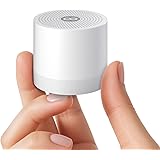The Best Sleeping Positions for Optimal Spinal Alignment
Achieving quality sleep is vital for overall health. Your sleeping posture plays a huge role. It affects your spine, muscles, and joints. Many people overlook its importance daily. The video above provides quick visual cues. It highlights good versus bad sleeping positions. This guide will expand on those crucial concepts. We will delve deeper into spinal alignment. Understanding this can transform your sleep.
Poor sleep posture leads to many issues. You might experience chronic back pain. Neck stiffness is another common problem. Headaches can also stem from poor alignment. These problems impact daily life significantly. Proper alignment supports your body naturally. It reduces strain on your ligaments and discs. This helps you wake up feeling refreshed. It promotes healing and muscle relaxation.
Understanding the Importance of Sleep Posture
Your spine has natural curves. These curves need support while you sleep. Incorrect positions can flatten these curves. They can also exaggerate them. Both scenarios create undue stress. This stress affects nerves and blood flow. Over time, it causes discomfort. It also contributes to degenerative conditions. Maintaining neutral spine alignment is key. It helps to distribute weight evenly. This allows your body to recover properly.
Think about your daytime posture. It affects your energy levels. Similarly, nighttime posture matters. It dictates how well your body repairs itself. A good sleeping position minimizes pressure points. It keeps your airways open too. This can even improve breathing. Understanding these basics is the first step. You can then make informed choices. This leads to much better sleep quality.
Side Sleeping: A Common and Generally Good Option
Side sleeping is very popular. It can be excellent for spinal alignment. The key is proper support. Your head, neck, and spine must stay straight. This prevents awkward angles. Use a firm pillow between your knees. This keeps your hips aligned. It also supports your lumbar spine.
Many people prefer a semi-fetal position. Slightly bend your knees and hips. Avoid curling up too tightly. A too-tight curl stresses your back. Your head pillow is equally critical. It should fill the gap between your head and shoulder. This keeps your cervical spine neutral. Choose a pillow with appropriate loft. Your mattress should also offer good support. It needs to cushion your shoulders and hips.
Back Sleeping: Support Your Spine
Sleeping on your back is ideal for many. It naturally maintains spinal curves. Your body weight distributes evenly. This reduces pressure points significantly. Place a small pillow under your knees. This supports your lumbar curve. It also reduces strain on your lower back.
Your head pillow should be flatter. It should cradle your neck gently. Avoid very thick pillows. These push your head forward too much. They can strain your neck muscles. The goal is a neutral head position. Imagine a straight line from your ears to your hips. This indicates good spinal alignment. Back sleeping can also help with acid reflux. Elevating your head slightly helps here.
Why Stomach Sleeping is Often Problematic
Stomach sleeping is generally discouraged. It places immense strain on your neck. You must turn your head to breathe. This twists your cervical spine for hours. This constant torsion can cause pain. It contributes to chronic neck issues. Furthermore, it flattens your lumbar curve. This hyperextends your lower back.
This position also creates pressure. Your joints and muscles are under stress. It can lead to tingling or numbness. If you must sleep on your stomach, make adjustments. Use a very flat pillow for your head. Some even sleep without a head pillow. Place a pillow under your pelvis. This helps maintain some lumbar curve. But transitioning to side or back sleeping is best.
The Role of Your Pillow in Sleep Alignment
Your pillow is more than just comfort. It provides critical neck support. The right pillow fills specific gaps. It keeps your head in alignment with your spine. Side sleepers need a thicker pillow. It bridges the gap to the mattress. Back sleepers need a thinner, contoured pillow. This supports the natural neck curve.
Pillow material also affects support. Memory foam conforms to your shape. Latex offers firm, responsive support. Feather pillows are soft but may lack structure. Consider your preferred sleeping position carefully. Choose a pillow designed for it. Replace pillows regularly. They lose their supportive qualities over time.
Choosing the Right Mattress for Better Sleep
Your mattress is another key component. It provides the foundation for your posture. An old or unsupportive mattress creates problems. It can sag in critical areas. This misaligns your spine. A mattress should support your body curves. It must also distribute your weight. Look for a balance of firmness and comfort.
Mattress firmness is subjective. Side sleepers often prefer a softer top. This cushions hips and shoulders. Back sleepers may need a firmer feel. This offers more consistent support. Different materials offer various benefits. Memory foam, innerspring, and hybrid mattresses are common. Research options based on your needs. Invest in a quality mattress. It is vital for your sleep alignment.
Achieving Restful Sleep Through Proper Position
Proper sleeping positions offer many benefits. You will experience less pain. Your muscles can truly relax. This promotes deeper, more restorative sleep. Waking up refreshed becomes the norm. Your overall mood improves significantly. Cognitive function can also get better. Paying attention to your sleep alignment is an investment.
It can take time to change habits. Be patient with yourself. Gradually shift your sleeping positions. Use pillows as tools for support. Listen to your body’s signals. Adjust as needed for comfort. Prioritize these adjustments daily. Consistent effort yields great results. Optimal sleeping positions lead to a healthier you.








